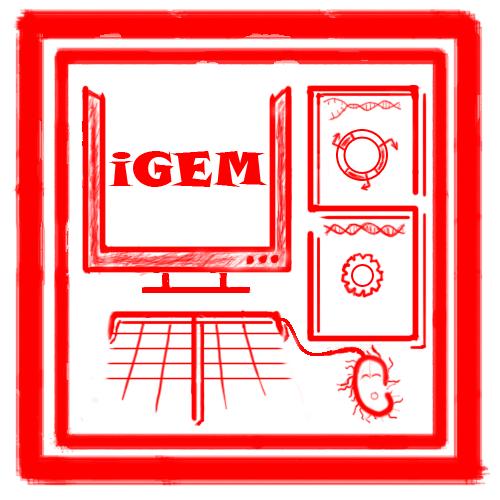Team:USTC Software/Notebook
From 2009.igem.org
(→Individual) |
(→Overall Construction (Wei Pan, Bo Ding)) |
||
| Line 23: | Line 23: | ||
| | | | ||
===Overall Construction (Wei Pan, Bo Ding)=== | ===Overall Construction (Wei Pan, Bo Ding)=== | ||
| + | ====Week 2==== | ||
| + | “What can we do for the experimentalists?” I saw my team members. It’s the third time for me to take part in iGEM. Interestingly, in this time I am the only person with the background of biology, while nearly everyone’s background is solo. It is really a mixture. I hope there will be chemical reactions among us. | ||
| + | “Design”, the key word floated in everyone’s mind during the discussion. The network inference from the microarray expression profile, for protein concentration profiles, from promoter sequence data, etc, can be done in the DREAM (Database for Reverse Engineering Analysis and Method) project. Meanwhile, the network design can also be done to the required profile. So we will start from here! | ||
| - | + | So the aims for our project: | |
| + | 1.Present a structure frame for network design | ||
| + | 2.Redesign the known networks to test the strategy | ||
| + | 3.In silico, design a network with a interesting behavior | ||
| + | 4.Realize the network in the cell | ||
| + | And the problems are really hard for our projects. Actually, everything we want to do is we have never done before. So we will try our best. | ||
| + | |||
| + | ====Week 4==== | ||
| + | The problems we faced may be harder than our imagination. First, the search space is too large to traverse. The number of potential topologies is , while K is the number of interaction forms and n is the number of species. It is an astronomy number if n >=3. Second, the non-linear system identification is still an unsolved problem in the present. The parameters can not be recognized exactly even the topologies are meeting the requirements. Some approximation should be done mathematically. First, the networks we designed are restricted to the simple network, which means the reactors are at most two kinds in one reaction. The searching space can be shrunk in this way, while all the dynamic behaviors can be simulated with this simple model. Second, we may need some restrictions to the interactions forms and the parameters. The more information is, the better system we can get by the design process. | ||
| + | |||
| + | ====Week 6==== | ||
| + | The frame of the software has been constructed as indicated in right figure. | ||
| + | [[Image:db_wk6.png|right|180x553px]] | ||
| + | |||
| + | |||
| + | ====week 9==== | ||
| + | From the analysis, we should get the information of a reaction from three aspects: topology, formula and the parameters. The optimized algorithms are required with the three different layers problems. For the bottom layer, the parameters are optimized with the known forms of formula. For the upper layer, we need genetic algorithm to look for the formula forms that meet the requirement. And for the top layer, genetic algorithm is also employed to optimize the topology. And I will work with the selection of the formula and the topology. | ||
| + | |||
| + | ====week 16==== | ||
| + | The genetic algorithm has been implemented with c++ and tested with some benchmarks. Next, we discussed about the data structures for the program, including the input form and input data, the output form and output data, the description of a reaction, and the items considering in formula. According to the discussion results, I began to implement the whole frame for the program. There are three classes in the program. | ||
| + | |||
| + | |||
| + | ====week 20==== | ||
| + | The frame of the program has been implemented. The oscillator system is tested. | ||
| + | |||
| + | |||
| + | ====week 22==== | ||
| + | information is integrated. And the adaptation system is tested | ||
| + | |||
| + | |||
| + | ====week 23==== | ||
| + | PSO Algorithm is proposed and implemented. | ||
| + | |||
| + | ====week 25==== | ||
| + | The multiple initial values system identification is integrated. And the toggle switch system is tested. | ||
| + | |||
| + | ====week 27==== | ||
| + | Wikiwikiwiki[[User:Heyu3|Heyu3]] Fast learning needed to digest so much info... | ||
|- | |- | ||
| | | | ||
| + | |||
===G/LSA and PSO (Yuwei Cui)=== | ===G/LSA and PSO (Yuwei Cui)=== | ||
Revision as of 21:12, 20 October 2009
| About | Team and People | Project | Standard | Notebook | Demo | Safety | External Links |
|---|
|
|
Opening RemarkIt's time to move from paper to website. We might recall the ever first plan and ambition when we first set feet on the software designing track. The following documentations record word by word the way how we are here. Calendar and EventsWork Distribution
Future PlanClosure - End or And?We hold in hands the same motivation to adventure, unfold and appreciate the secret of life via the way of virtual evolution and simulation. The seven of us major from automation to engineering, mathematics to physics, grading from freshman to PhD candidates. Though there had been hard times, we have a faith. More hopefully, we’d express our gratitude to the kind support from the School of Life Science of USTC, which makes all impossible possible. From the one-month brainstorm we collected our first proposal – construct virtual bacteria. Yet, for some practical reasons we then shifted to a second proposal, which narrowed to molecular level simulation and later on turned out to be the prototype of our present project. From the one-month brainstorm we collected our first proposal – construct virtual bacteria. Yet, for some practical reasons we then shifted to a second proposal, which narrowed to molecular level simulation and later on turned out to be the prototype of our present project. What do we desire to realize? In short, just tell us what you want your bio-device to behave, and we will return you with a list of eligible formation strategies for your design, of course, with bio-bricks. Turgidly as the idea might appear to be, this is basically an adoption of the gist of reverse engineering and evolution. By intake the custom-designated behaviors, we search, sometimes traverse, the solution space formed by nearly-inexhaustible combination of Biobricks. In order to make the simulative process applicable and practical, we employed a couple of algorithms widely used in computational sciences like Metropolis method and Dijkstra Algorithm to cut down the time cost and optimize the final result. Analysis on sensitivity and robustness has also been carried out to escort a reliable output of the final list of Biobrick combinations. Now we have an ABCD for reconstruction of bio-network, or rather, all ODE systems theoretically. But there still exist many more defects and more inspirations on a higher level. Therefore, instead of fixing 'The End' to the last line of our notebook, we'd rather define another 'and...' clause, claiming another start for greater good. See ya iGEM2010! |
|
 "
"





























